Buried in Dandora
Photographer Micah Albert captures the danger, filth and tragedy of Nairobi’s massive dumpsite
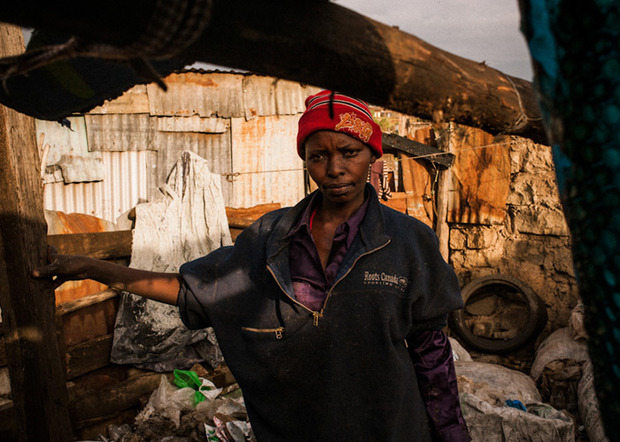
In his exhibit of images from Nairobi entitled “Buried in Dandora”, photographer Micah Albert explores the 30-acre wasteland located just 2.5 miles from the central business district. About one million people live by the vast Dandora dump site that literally spills into their homes and sickens children and adults with respiratory ailments, skin disorders and other fatal diseases. Sanitation problems increase exponentially with the growing population being literally buried in garbage but sadly, Kenya’s leadership shows alarming indifference to the plight of the people living in the slums of Dandora. Environmental laws, UN-commissioned health studies and calls for closure from human rights groups have largely been ignored.
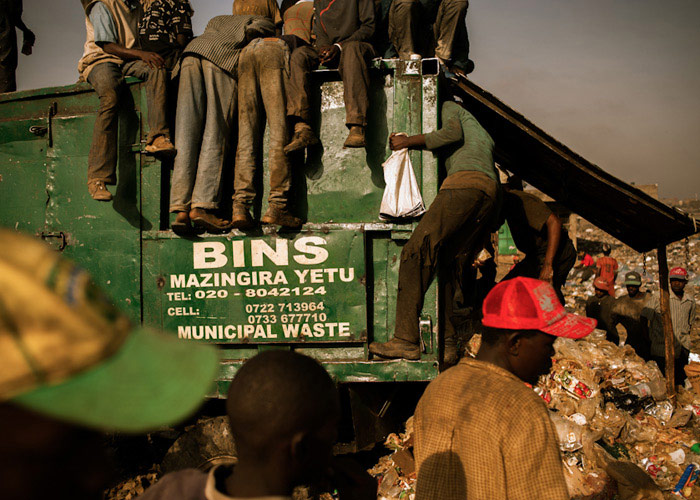
Making the situation even more complicated is the cottage industry that has sprung up in Dandora. Street children live off salvaged items including food, candy and other things they find in the piles of waste. Thousands of people now make small amounts of money each day scrounging through the debris as they complete the back-breaking task of sorting waste for private companies.
When Albert learned about Dandora, he set off on a journey to tell the story of the people who live there, armed with a grant from the Pulitzer Center on Crisis Reporting to make the project possible. For the “Buried in Dandora” series, Albert documented the piles of waste amid poorly constructed homes, and the harrowing labor involved in picking through the trash. Among the hardship and tragedy captured in the images emerges a sense of joy reinforcing the resilience of the human spirit.
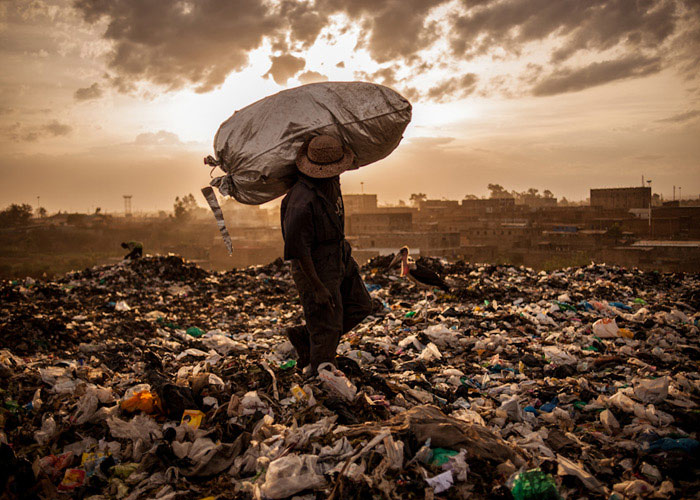
“My approach to photography over the years has been to work on undercover issues mostly in Africa and the Middle East,” says Albert. “I have always gone out of my way to travel to Yemen, Chad, Sudan and the Congo, to extremely difficult to access locations, to be a voice to the voiceless. Nairobi has been a hub for me for such a long time, I know it like the back of my hand, or so I thought. Then I found out about this dump site and learned that this is one of the biggest in Africa and that many people live and work in this place. I partnered up with David Conrad, a writer I met in 2008 when we were both covering the elections in Kenya. We simply wanted to tell the story of Dandora.”
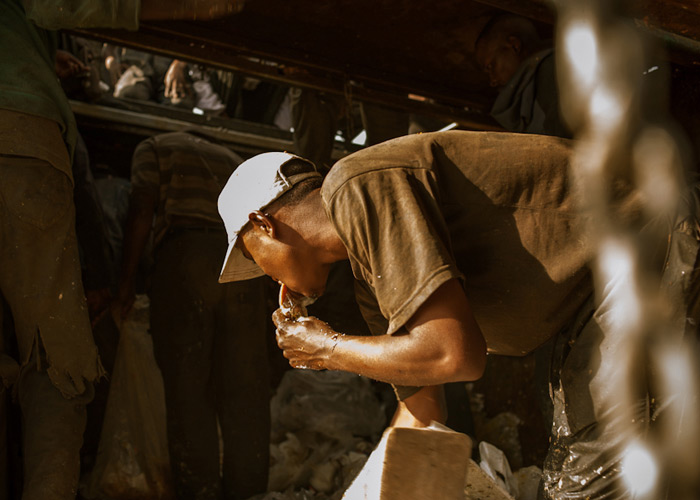
Once they arrived back in Kenya, getting to Dandora was an odyssey. “It took three days of negotiating with the lead of the cartel that controls the dumpsite,” explains Albert. “It is one of the most dangerous places in Kenya. Slums surround the dumpsite. You can’t just show up. So, to get in there I needed to negotiate with this guy named Tiger who is the head of the cartel. Most taxi drivers won’t go there for fear of their own safety. We more or less had to hide in the back of the car to get into the slum area two hours before the sun came up. Security was a big deal. This place is off the grid. This is a place where bodies are dumped, where women are taken to be raped and where weapons are hidden. This is the place where all illegal activity happens. That is what I didn’t expect. I am used to going into dangerous places, but I didn’t except it to be that much of a security issue.”

So moved by the tragedy of Dandora, Albert gets emotional talking about some of the people he encountered there. “The kid doing a handstand, I had to take that shot,” he says. “I am a new dad. No matter what circumstances or how terrible life is—kids will still be kids. I always try to show the positive, I don’t feel like there is enough of that in today’s news and media. The dumpsite at Dandora is a horrific place, but I really try to get to know people like I would get to know my neighbor. I don’t just start bombarding them with my camera. I try to get to know them as a person and once you do that you see ‘that guy is a dad too’, ‘that guy is a brother’, ‘that man is going to try to provide for his family’. There are a lot of points I can relate to.”
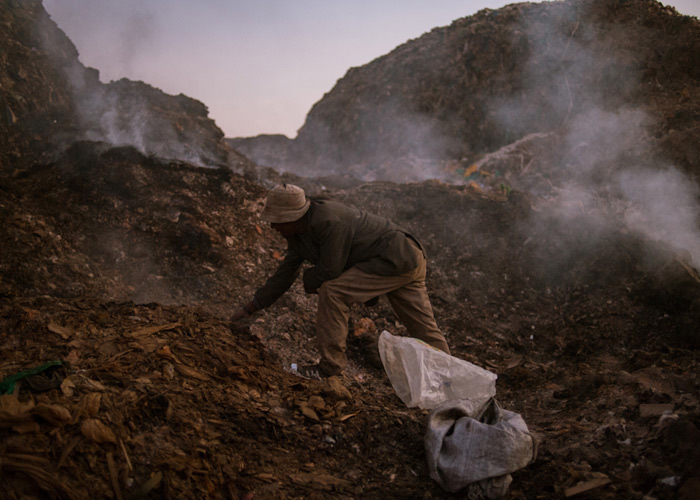
“Buried in Dandora” will be on view at Apolis: Common Gallery in downtown Los Angeles from 7-31 December. At the opening night reception, Albert will be joined by Pulitzer Center managing director Natalie Applewhite and Apolis co-founders Raan and Shea Parton. Albert is also an Apolis Advocate for the socially motivated lifestyle brand and contributes regularly to their Apolis Journal.
For more images, please see gallery below.
Images by Micah Albert / courtesy of Pulitzer Center



















